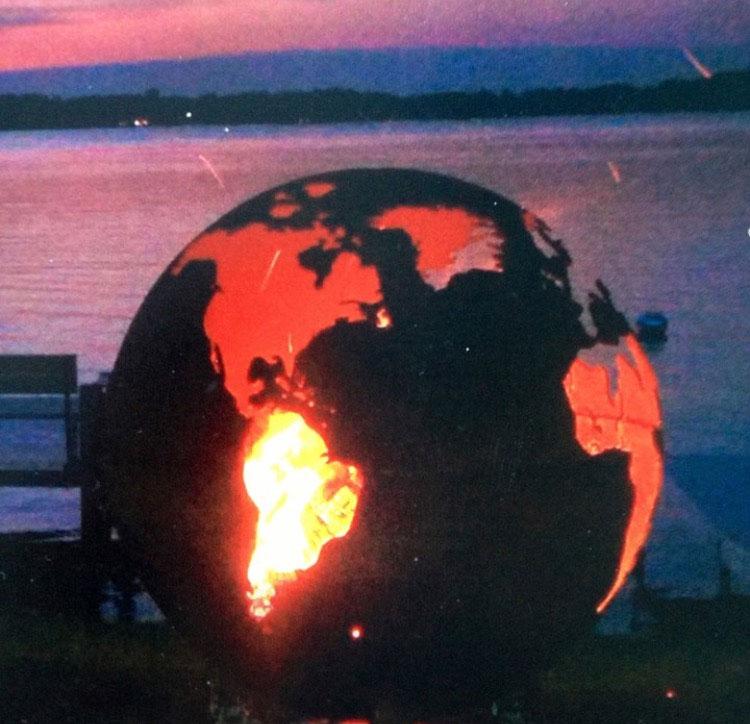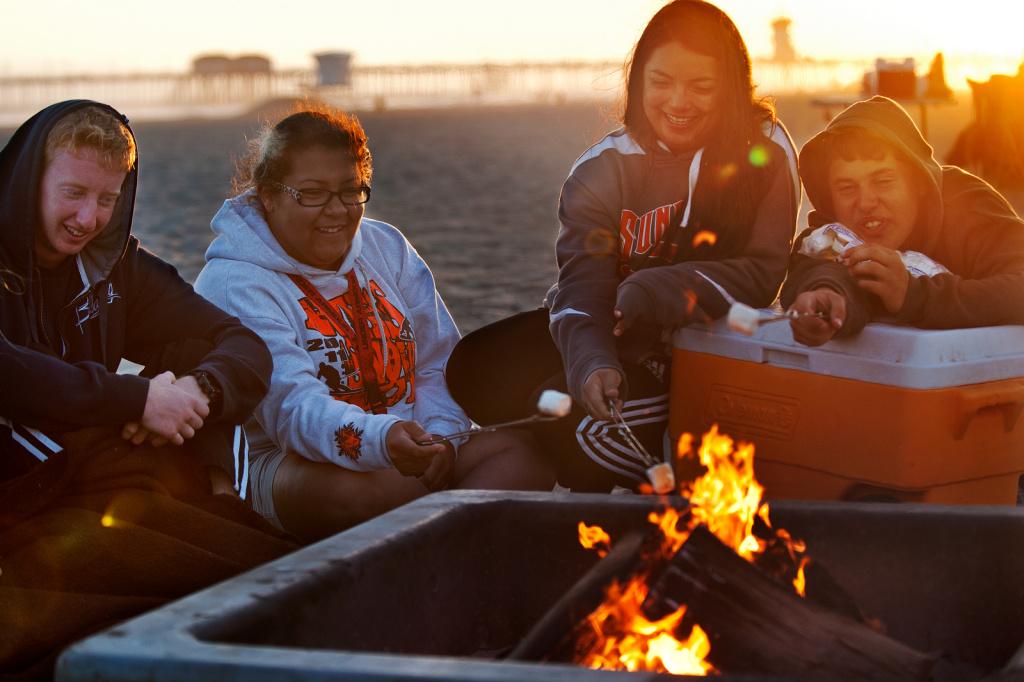Planning That Backyard Fire Pit
Posted by The Fire Pit Store on 1st Feb 2019
Now that the weather is beginning to show signs of clearing off and cooling down, I thought this might be the perfect time of year to come up with some sort of plan for building that backyard fire pit I'd been dreaming about for so long. And this has been the biggest challenge I've run up against so far: choosing the kind of fire pit I can build myself in my yard that won't blow my budget and is also going to be very safe.
Even though some of the pre-fab designer pits I've seen lately are awesome, I didn't necessarily want to buy a manufactured one right off the bat. First of all, I have a lot of room. I like being outside, and I like to work with my hands. Secondly, I had an idea of doing my own thing by designing a more permanent backyard fire pit which I could eventually expand out into a whole outdoor entertainment area. For the present, it could just be something simple, low-cost, with nothing to move around or break. What could be easier?
Unfortunately, as soon as I started talking to people and looking around online, I found there seemed to be about as many ideas and approaches on how to construct a home fire pit as there were people who enjoyed them. I also noticed that there were an equal number of individuals online who think they can tell you how to do it yourself cheaply and safely, but whose means and methods seemed to me, for want of a better word, questionable. I've probably reviewed the entire gamut of do-it-yourself backyard fire pit schemes in the past couple of weeks. There are some as primitive as an old washtub or loosely thrown-together circle of rocks, all the way up to something as extravagant and palatial as one of those outdoor living rooms complete with fire-spitting fountains. But having a little of my own experience with materials and making things, in the end, I concluded that there isn't any such thing as a cheap, homemade fire pit that is truly safe, or a simple, homemade fire pit that is truly inexpensive. Whatever your budget is for your pit, count on adding at least $50.00 or more to the cost because in the end it's never as simple as it seems, and even with that you may still find yourself having to make some compromises.
It may seem like a pain in the neck, but when planning a fire pit it's better to look at it from every angle ahead of time. It can be something of a balancing act but don't be discouraged. And as the saying goes, it's OK to take risks as long as you're not hurting anyone but yourself. By that I mean, if you're a weekend warrior living outside the city limits and beyond the prying eyes of a neighborhood association, you can probably build a fire pit any way you like and it probably will work just fine. But if you're like me and live in a slightly more urban area where there are ordinances to consider, and you have small children, pets, and lots of combustible things around like trees, neighbor's houses, underground cables, and whatnot, then a little more planning is involved when you start burning things. An ounce of prevention is then truly worth hundreds of thousands of dollars worth of cure.
So where do you start? If you want something a little more sophisticated than just an empty oil drum or a burned-out
hole in the backyard, then you might consider an old-fashioned brick fire pit. But first, if you're foregoing a safety-inspected, manufactured fire pit delivered to your home in favor of building your own, and you want to save a few bucks to put towards that first backyard shindig, then the last thing you want to do is to go down to the local Home Depot and ask them how to do it. Contrary to the commercials you see on television, it's not in their best interest to save you money. Likewise, that dude on YouTube who's showing everyone how he made a cheap, neat-o fire pit in his backyard for under a hundred bucks? He's making money off of links and advertisements. Not only is he unconcerned, but he's also completely oblivious to the fact that super-heated moisture trapped inside one of those rocks or bricks he's using can cause one to explode in your kid's face. You can even see that Mr. YouTube Expert hasn't even used his fire pit long enough to explore this possibility for himself. Think it through. Do as much research as you have to.
Agreed, a mortar and flagstone fire pit can be very attractive, and even the contoured cinder blocks they make nowadays make a good-looking fire circle. However, even ordinary brick, paving stones, and cinder blocks are no longer cheap materials to use these days, to say nothing of flagstone and flexible, fire-resistant mortar. Bricks and pavers can be shockingly heavy, too, so you might have to figure in the cost of having them delivered if you don't have extra people around to help you, and you're not up for a lot of heavy lifting.
By far the best and safest way to use cinder blocks, brick, or stone for a more robust style of the outdoor pit (and the way I recommend, it) is to insulate the inner part of the structure with actual firebrick. It's pale white, perfectly safe, amazingly lightweight, and soft enough to be cut with a hacksaw to any form. Firebricks can usually be found in hardware stores or any place that sells fireplace or wood stove equipment. An ordinary brick or stone fire pit should be lined with something that can withstand extremely high temperatures. An alternative to lining your pit with firebrick is to use thick metal sheeting or a metal form, like the ones they use in campgrounds. I don't know where you would get these, however, but I don't suggest taking them from a campground.
There are a few other things to take into consideration relating directly to where you're going to put your fire pit once
you've checked out the local ordinances, figured out costs, and chosen your materials. Many manuals and online sources suggest keeping your fire pit at least 10 feet away from property lines and anything combustible like your fence, your neighbor's dog house, or nearby trees, but to my horror, I've seen burning embers travel much farther on the gentlest of breezes. In addition, if you live in a windier location, is there an area of your property that could serve as a windbreak, and are you willing to construct something of that nature if there isn't?
Many fire pit plans call for measuring and excavating a shallow pit to be lined with sand or gravel before the laying of brick, which helps support the retaining wall that keeps the fire from accidentally spreading. Such plans also recommend an area surrounding the pit wall which is free of grass, sticks, or leaves, anything that a flying ember could ignite. This area can also be covered with an extra layer of sand or gravel for safety. With all this in mind, do you know the location of your home's water pipes, gas lines, and underground cables? Locating overhead tree limbs and power lines is easy enough, but if you have an underground sprinkler system, would you know how it's laid out? If you have doubts about any of these things, then it's probably smart to stay away from an in-ground style pit.
Since I live in a wooded area just on the outskirts of a small town and I'd probably have to do some driving to get anything fancy, I know the final plan for my home-made fire pit is going to hinge pretty heavily on cost and availability of the materials I want, as well as on safety. In my next article, I hope to bring you along on my journey as I execute my plans for That Backyard Fire Pit.




